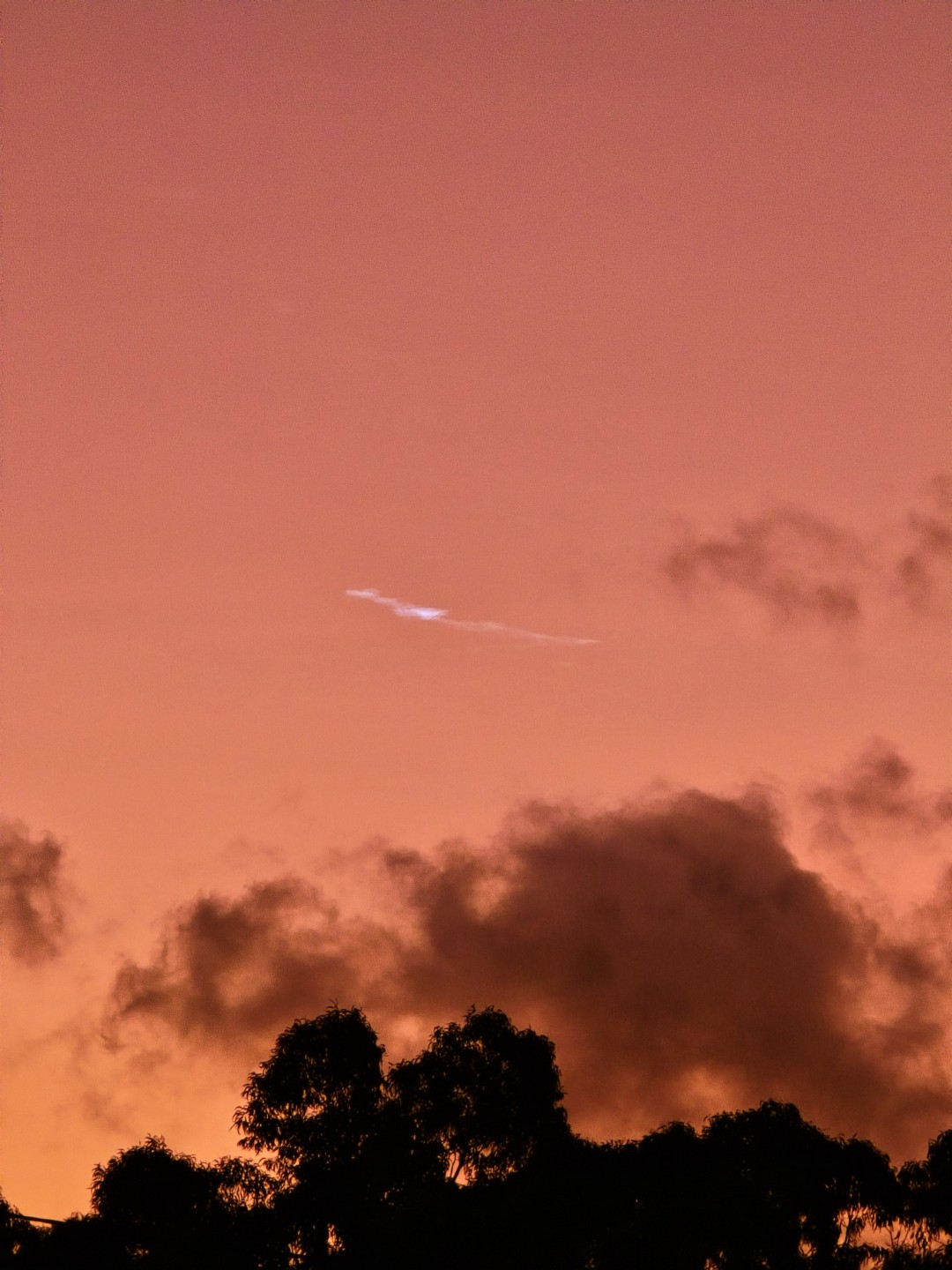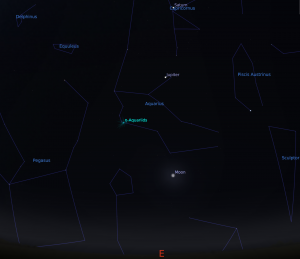Planets
When it comes to the planets, Saturn returns to our evening skies in August, rising around 8 pm in late Aug and coming to opposition in early September. The rings are more difficult to see now, being almost edge on to us, but make for a unique sight ! It’s like a white line of ink has been drawn across the planet, quite a sight to behold.
Jupiter and Mars remain in the morning sky for August & September and are currently very close together and visible in the same low power field of view, widening every day ATM
It is so amazing to be able to see the moons of Jupiter, it’s cloud bands and Mars all at the same time in the one telescope field of view.
Venus makes a return to the western evening sky from early August, climbing ever higher through September & is something you cannot miss if you look to the west as the light fades from the sunset sky.
Meteor Showers
Sometimes you can be lucky and see a random meteor unrelated to the meteor showers we have been experiencing lately.
This smoking trail in the photo lingered for 20minutes plus, as a meteor on a shallow trajectory burnt up in the atmosphere above NE Arnhemland on our recent Astronomy Presentations at the Garma Festival.
It glowed green before bursting into yellow flame 
There are no major meteor showers currently active but you can always expect up to 6 meteors an hour from random directions under a dark sky and especially during the pre dawn hours.
The next Major Meteor shower will be the Southern Taurids in early October & we will talk more about that on the next edition!
Nova Star
We are waiting with Bated breath for the Nova in the constellation Corona Borealis the so called “Blaze Star” and it’s due to pop, any week now ! When it does it will outshine most stars in the evening sky and certainly brighter than all in Corona Borealis. An event that only comes around once every 80 years, it will be a must see for astronomers everywhere in the world. (see our previous blog post for more details)
Constellations
When it comes to the constellations in the northern skies Cygnus the swan, makes its presence known with the showpiece binary star Albiro at the head of the swan. It’s joined by Vega in Lyra the Harp which are guideposts to the famous Ring Nebula.
The constellation to watch of course is Corona Borealis, near the bright star Arcturus as we wait for the Blaze star to bust into life.
In the southern sky the other big bird is the aboriginal figure of the Dark Emu is clear and prominent. A topic well covered in this great Emu Dreaming book by professor Ray Norris.

Constellations
Across the path of the Ecliptic we see Aquarius, Capricorn, Sagittarius & Scorpius dominate with lots of great nebulae & sparkling star clusters to observe ! Even a Small Telescope will show these spectacular deep sky wonders in this region. The Lagoon Nebula, Sagittarius Star cloud, butterfly cluster, M4. Globular cluster and lots more !
Get outside, keep looking up and do everything you can to keep our skies dark By turning your outside lights off, and keep them pointed downwards!
As always we are here to answer your questions and love to hear about your experiences under the night sky. We have certainly had some amazing experiences over the past few months.
Clear Skies from us all at Nightskysecrets



